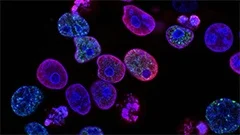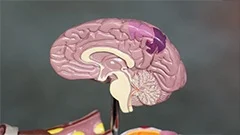Introduction
Endocytosis, phagocytosis, and exocytosis are fundamental processes in cell biology that involve the transport of molecules into or out of cells. These processes play crucial roles in various physiological and pathological functions such as nutrient uptake, waste disposal, immune response, signal transduction, and cell-cell communication. In this comprehensive course, we will delve deep into these processes, their mechanisms, regulation, and significance to better understand the intricate dynamics of cellular biology.
Endocytosis
Overview
Endocytosis refers to the process by which cells engulf extracellular substances, such as nutrients, signaling molecules, and pathogens, within membrane-bound vesicles. The term "endocytosis" is derived from the Greek words endon (within) and kytos (cell).
Types of Endocytosis
Clathrin-mediated Endocytosis
Clathrin-mediated endocytosis (CME) involves the formation of clathrin-coated vesicles that engulf extracellular components. CME is the most commonly studied type of endocytosis and plays a crucial role in nutrient uptake, receptor internalization, and signal transduction.
Clathrin-independent Endocytosis (Cie)
Clathrin-independent endocytosis (Cie) refers to the various pathways that do not rely on clathrin for vesicle formation. Cie includes caveolin-mediated endocytosis, phagocytosis, macropinocytosis, and other lesser-known mechanisms.
Phagocytosis
Phagocytosis is a specific form of Cie that involves the engulfment of large particles such as microorganisms, cell debris, and apoptotic cells by specialized phagocytes like macrophages and neutrophils.
Mechanism of Endocytosis
Steps in Endocytosis
- Initiation: The process begins when the plasma membrane invaginates to form an endocytic pit or clathrin-coated pit, depending on the type of endocytosis.
- Vesicle formation: The endocytic pit buds off from the plasma membrane to form a vesicle that is internalized into the cell.
- Transport: The vesicle moves along microtubules towards the perinuclear region, where it fuses with early endosomes or lysosomes for further processing.
- Intracellular trafficking: The vesicles containing the engulfed material undergo sorting and transport to various intracellular compartments for degradation, recycling, or storage.
Regulation of Endocytosis
Endocytic processes are tightly regulated to ensure proper uptake of extracellular components and maintain cell homeostasis. The regulation occurs at multiple levels, including signaling pathways, scaffolding proteins, and lipid compositions of the plasma membrane.
Phagocytosis
Phagocytosis is a highly specialized form of endocytosis that allows phagocytes to engulf large particles like microorganisms, cell debris, and apoptotic cells. This process plays a crucial role in the immune response by eliminating pathogens and maintaining tissue homeostasis.
Mechanism of Phagocytosis
- Recognition: The phagocyte recognizes the target particle through pattern recognition receptors (PRRs) or opsonins, such as antibodies or complement proteins.
- Adhesion and engulfment: The phagocyte extends pseudopodia to surround the target particle, forming a phagosome that pinches off from the plasma membrane.
- Phagosome maturation: The phagosome fuses with lysosomes to form a phagolysosome, where the engulfed material is degraded by hydrolytic enzymes.
- Release of products: The breakdown products are either recycled back into the cell or released as metabolic byproducts or antigens.
Exocytosis
Exocytosis is a process by which cells release intracellular components, such as secretory proteins and vesicles, to the extracellular space through membrane fusion events.
Mechanism of Exocytosis
- Vesicle transport: Secretory vesicles are transported from their site of synthesis in the endoplasmic reticulum (ER) to the plasma membrane via the Golgi apparatus and microtubules.
- Docking and fusion: The secretory vesicles dock at specific sites on the plasma membrane, where they undergo a series of conformational changes that lead to membrane fusion and release of their contents into the extracellular space.
- Regulation of Exocytosis: Exocytosis is tightly regulated by signaling pathways, calcium ions, and cytoskeletal components to ensure proper secretion and maintain cell homeostasis.
Significance of Endocytosis, Phagocytosis, and Exocytosis
Endocytosis, phagocytosis, and exocytosis play essential roles in various physiological and pathological functions. Understanding these processes can provide valuable insights into disease mechanisms, drug delivery, and cell-based therapies.
MCQ: Test your knowledge!
Do you think you know everything about this course? Don't fall into the traps, train with MCQs! eBiologie has hundreds of questions to help you master this subject.
These courses might interest you
Create a free account to receive courses, MCQs, and advice to succeed in your studies!
eBiologie offers several eBooks containing MCQ series (5 booklets available free for each subscriber).




